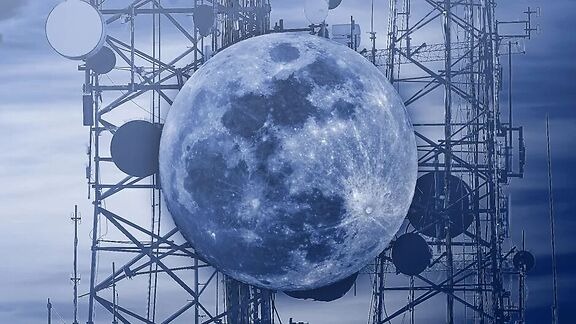- | 9:00 am
Why Nokia wants to put an LTE network on the moon
The telecommunications giant’s starry-eyed ambitions meet a real off-world problem.

Nokia has picked a particularly challenging site for an upcoming network deployment: a place where temperatures range from 250 degrees to -208 degrees Fahrenheit, and there is no air to breathe whatsoever. But on the upside, the lack of atmosphere means no clouds to impair power generation by this future cell site’s solar panels.
Nokia’s plan to put a cellular network on the moon may seem like an Elon Musk-size publicity stunt. But its lunar-LTE ambitions come with a NASA contract to solve a real off-world problem: Existing data systems won’t scale as increasing numbers of devices—and someday, people—work some 239,000 miles away from Earth and its typical communications nodes.
“We know we need more than the communication we have right now,” says Thierry Klein, president of Bell Labs Solutions Research at Nokia Bell Labs. In 2020, NASA awarded Nokia a $14.1 million “Tipping Point” contract to develop and deploy a test LTE system that could pave the way to a lunar network for use by astronauts living and working on the moon and in lunar orbit as part of NASA’s Artemis project.
“Most links from the moon are point-to-point Direct-To-Earth, which has worked well with our current space network infrastructure and number and type of lunar missions,” says Jason Mitchell, director of NASA’s SCaN Advanced Communications and Navigation Technology division, in an email. But that legacy system won’t keep up with the space agency’s ambitions for a longer-term, scaled-up presence on the moon—and, ultimately, Mars.
“Link management becomes a substantial challenge,” he explains. “So, we need a solution to scaling and to smartly flow data where it needs to go, i.e., not all data needs to come back to Earth.”
Nokia, however, is starting on a much smaller scale than a lunar base. Its first beyond-Earth cell site will fit on the compact automated Nova-C lander that the Houston space startup Intuitive Machines plans to launch next summer on a SpaceX Falcon 9 rocket as part of its IM-2 mission—which will also deliver a tiny rover that will use this network to talk to the lander.
“We provide all the parts,” says Klein. “We provide the terminal that goes on the rover, the antenna that goes on the rover, the fully integrated network equipment that goes on the Nova-C lander.”
He cites better throughput as the most immediate upgrade, predicting 50 Mbps performance up to about 3 miles away on a 1.8 GHz frequency that Bell Labs picked for, among other reasons, reduced interference with radio astronomy.
Klein says the network gear attached to the side of the Nova-C is about the size of a deep-dish pizza box and includes two redundant units.
“The starting point is a commercial Nokia small cell product,” Klein says. “We’ve done a lot of modifications from a maintenance, operational, reboot perspective”—for example, including software hardening to resist radiation interference.
The receiver on the rover, meanwhile, is about the size of two iPhones stacked together.
And why only 4G instead of 5G?
“When we started this project, that was a few years back,” Klein says. “4G, from our perspective, was definitely the right starting point to validate this technology.”
New Jersey-based Bell Labs—the storied research center founded in 1925 by Western Electric and the company then known as American Telephone & Telegraph that became a Nokia property in 2016—started working toward this goal well before NASA called.
In 2018, it signed a deal with Vodafone Germany to provide a lunar network for Mission to the Moon, a private mission by a Berlin firm then named PTScientists that would have delivered two Audi-built rovers near the landing site of Apollo 17, where American astronauts left their last footprints on the moon in December 1972.
That effort, in turn, built on work Nokia did for Alphabet’s Project Loon, the Google parent firm’s ultimately unsuccessful effort to provide broadband from a flock of autonomous balloons 11 to 16 miles up in the sky.
PTScientists went insolvent in 2019 and that mission didn’t happen, but Intuitive Machines seems much further along. Its debut IM-1 mission is now projected to launch sometime in the first quarter of 2023.
Success on IM-2, says Klein, “should open the door and validate that we can do this.” Future missions could bring multiple-node networks, 5G included, to future missions.
As NASA’s Mitchell writes, this Tipping Point project “provides the first steps on a potential path to commercial service capability at the moon.”
“With all of the things that we’ve had to do for the equipment on the moon, we also have lessons learned that we can bring back to terrestrial environment,” he says. “If you think of a mine or an oil rig or a remote wind farm, there’s a lot of extreme industrial environments on earth.”






































